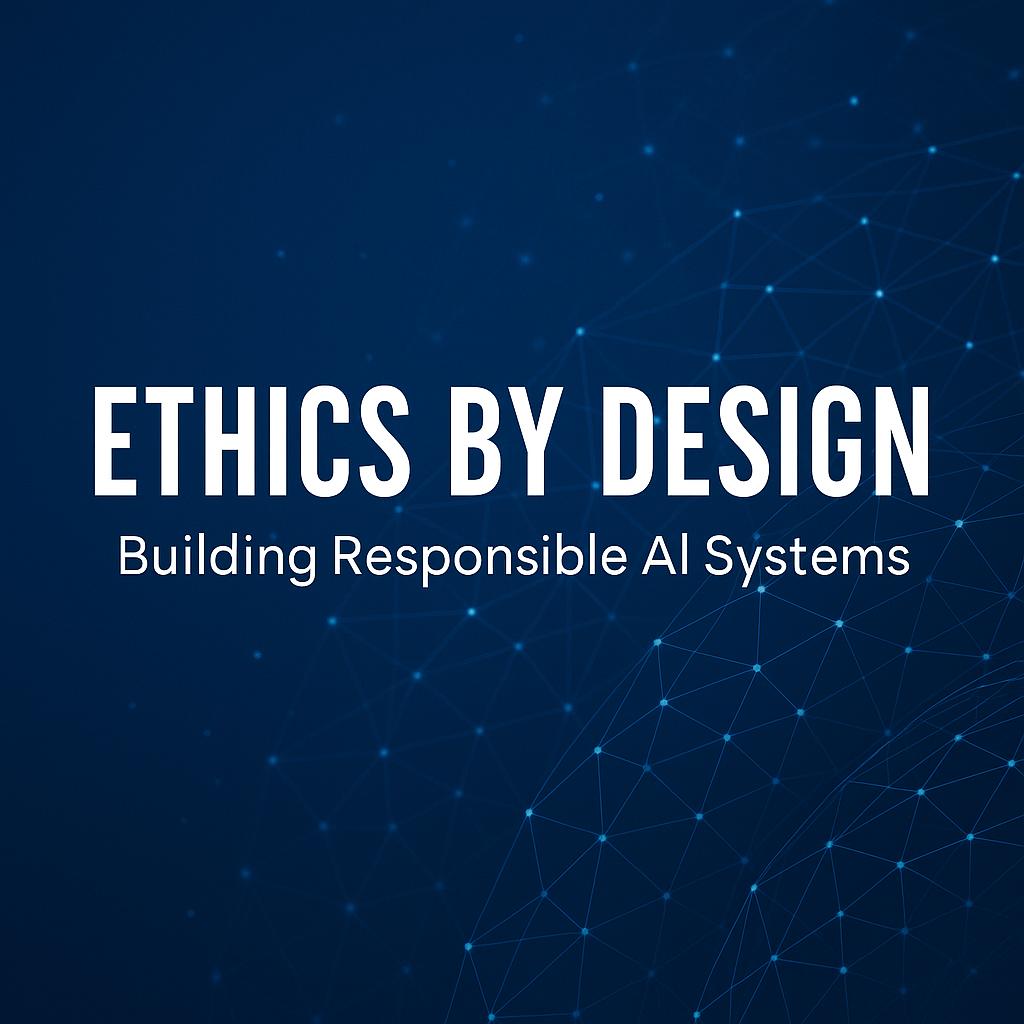Introduction
As artificial intelligence (AI) continues to permeate various aspects of our lives, the ethical implications of its deployment have become increasingly critical. Ethics by Design is a concept that emphasizes the integration of ethical considerations into the very fabric of AI development. This approach recognizes that ethics is not solely a concern for humanity but encompasses multiple dimensions, including governance, ethical principles, and practical design strategies. In this blog, we will explore how these elements come together to create AI systems that are explainable, trustworthy, responsible, and fair.
The Multi-Dimensional Nature of AI Ethics
Core Ethical Principles
At the foundation of ethical AI development lies a set of core principles that guide the design and implementation of AI systems. These principles include human centricity, transparency, accountability, fairness, reliability, lawfulness, and privacy/data protection. Each principle serves as a cornerstone for creating technology that prioritizes human values and societal well-being. By embedding these principles into the design process, developers can ensure that AI systems are not only effective but also aligned with ethical standards. Incorporating these core principles into AI development is essential for fostering trust and acceptance among users. When ethical considerations are prioritized, the resulting systems are more likely to be embraced by society, paving the way for responsible innovation.
Global Perspectives on AI Ethics
Different regions and organizations have developed their own frameworks for ethical AI, reflecting diverse cultural values and priorities. For instance, the European Union emphasizes human agency and technical robustness, while the US Department of Defence focuses on responsible and equitable AI. Australia prioritizes human well-being and fairness, and the UK Ministry of Defence highlights human centricity and bias mitigation. These varied perspectives enrich the global conversation on AI ethics, providing a wealth of insights and best practices. By learning from these frameworks, developers can adopt a more holistic approach to ethical AI, ensuring that their systems are informed by a broad spectrum of ethical considerations.
Transforming Principles into Practice
Design Strategies for Ethical AI
To translate ethical principles into actionable strategies, developers must adopt specific design practices. For example, implementing explainable AI (XAI) techniques can enhance transparency, allowing users to understand how decisions are made. Additionally, employing diverse training data sources and conducting regular bias audits can help mitigate unfairness in AI systems. By focusing on these design strategies, developers can create AI systems that not only meet technical requirements but also uphold ethical standards. This alignment between design and ethics is crucial for fostering public trust and ensuring that AI technologies serve the greater good.
Integration into the AI Development Lifecycle
Integrating ethical considerations into the AI development lifecycle is essential for ensuring that these principles are upheld throughout the process. During the planning phase, ethical impact assessments and stakeholder consultations can help define ethical requirements and identify potential risks. In the development phase, implementing explainability tools and fairness metrics can guide the creation of responsible AI systems. By embedding ethics into each stage of the development lifecycle, organizations can create a culture of accountability and responsibility. This proactive approach not only enhances the quality of AI systems but also reinforces the commitment to ethical practices.
Building Trustworthy AI Systems
Key Components of Trustworthy AI
To build AI systems that are truly trustworthy, developers must focus on several key components: explainability, reliability, fairness, and safety. Explainability ensures that users can understand the rationale behind AI decisions, while reliability guarantees consistent performance. Fairness involves equitable treatment across diverse groups, and safety encompasses risk management and protection against misuse. By prioritizing these components, developers can create AI systems that inspire confidence and foster positive user experiences. Trustworthy AI is not just a goal; it is a necessity for the sustainable growth of AI technologies.
Practical Implementation Guidelines
Best Practices
Establishing clear ethical guidelines from the outset is crucial for successful AI development. Involving diverse stakeholders in the process ensures that multiple perspectives are considered, leading to more inclusive and equitable outcomes. Continuous monitoring and improvement, along with comprehensive documentation, further enhance the ethical integrity of AI systems. By adhering to these best practices, organizations can navigate the complexities of AI ethics and create systems that align with societal values. This commitment to ethical development is essential for building a future where AI technologies benefit everyone.
Common Challenges and Solutions
Despite the best intentions, developers may encounter challenges in balancing performance with ethical considerations. For instance, achieving explainability without sacrificing accuracy can be difficult. However, by employing interpretable AI techniques and conducting thorough bias testing, developers can address these challenges effectively. Recognizing and proactively addressing these challenges is vital for the successful implementation of ethical AI. By fostering a culture of continuous learning and adaptation, organizations can overcome obstacles and create systems that are both innovative and responsible.
Future Directions
As the field of AI ethics continues to evolve, new challenges and solutions will emerge. Key areas for future development include advanced explainability techniques, improved fairness metrics, and enhanced privacy-preserving methods. By staying informed and adaptable, developers can ensure that their AI systems remain aligned with ethical standards and societal expectations. The future of AI ethics is bright, and by embracing a forward-thinking approach, we can create technologies that not only advance human capabilities but also uphold our shared values.
Conclusion
Ethics by Design is not merely an afterthought in AI development; it is a fundamental approach that should be integrated throughout the entire AI lifecycle. By considering ethical implications from the outset and implementing appropriate design strategies, we can build AI systems that are powerful, responsible, and beneficial to society. For those interested in deepening their understanding of this critical topic, Forti5’s new course on Udemy, “AI Ethics by Design,” offers comprehensive insights and practical guidance for implementing ethical principles in AI development. This course is an excellent resource for anyone looking to navigate the complexities of AI ethics and contribute to the creation of responsible AI systems.
